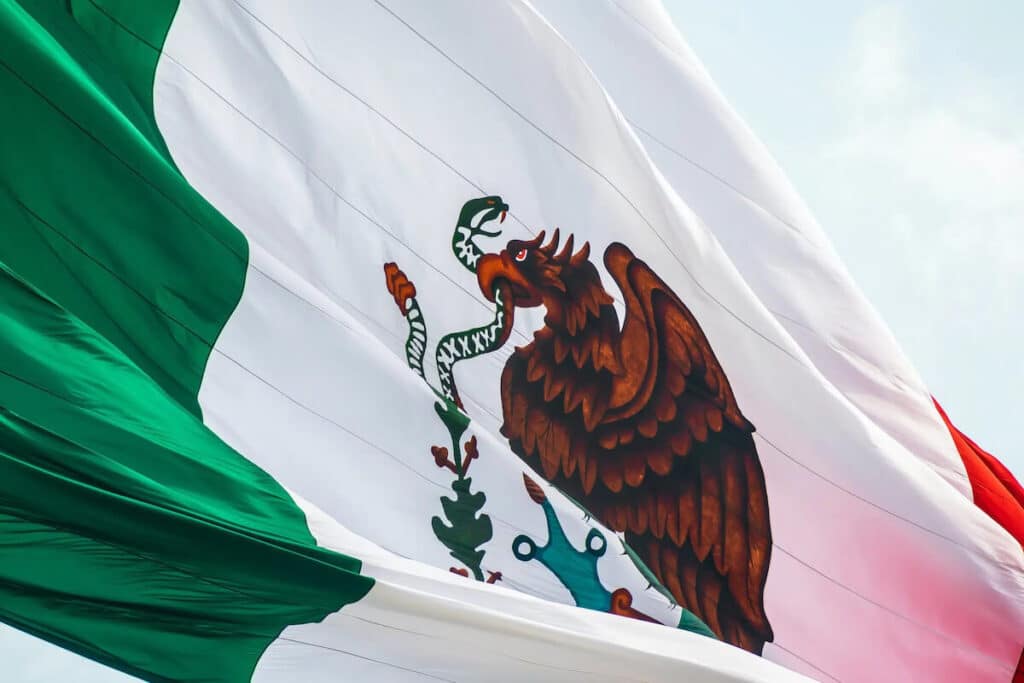Mexico gave the world tomatoes, chili peppers, chocolate, turkeys, and tacos. And while that would be enough for any country’s resume, there’s so much more to love about Mexico: cost of living, biodiversity, a strong economy, natural beauty. That’s why many people move there, and why some also become Mexican citizens.
Do you want to be a Mexican citizen? If you don’t have a Mexican birth certificate, here’s what you need to know about the citizenship application process.
Is it hard to become a Mexican citizen?
The Mexican government wants to welcome safe and productive people into the country. Population growth creates economic opportunity and tax revenue.
If you’re a U.S. citizen who wants to live in Mexico, you’ll need to provide some general information. They want to be sure you can support yourself, and that you don’t pose a danger to society.
Becoming a naturalized Mexican citizen — meaning a citizen who was once a foreign national — is a much longer process. Citizenship comes after years of being a model resident and embracing the culture.
What are the advantages of becoming a naturalized Mexican citizen?
Becoming a naturalized citizen comes with benefits that make living in Mexico more rewarding.
Naturalized citizens have the right to vote. They can also own property close to international borders and beaches. Foreigners can only buy real estate in restricted zones through a trust.
Citizens also do not need to inform the immigration office if they get a new job or change their address. And since citizenship doesn’t expire, there is no need to renew your legal residency.
As a bonus, citizens get priority going through immigration at the airport.
What is the process of becoming a naturalized Mexican citizen?
Mexico wants to be sure you’ve built roots in the country before granting you citizenship. They also want to make sure you have an understanding of Mexican history and culture.
To become a naturalized citizen of Mexico, start by understanding your eligibility requirements. Your personal ties to Mexico and your immigration status determine how long you must live in Mexico before applying.
If you meet the residency requirements, make sure you’ve learned enough Spanish to pass an aptitude test.
There are generally five steps to the Mexican naturalization process:
- Learn and meet the eligibility requirements.
- Prepare your application.
- Gather your supporting documents.
- Meet with an immigration representative.
- Receive permission and attend a naturalization ceremony.
Being prepared can get your citizenship granted faster.
How to become a Mexican citizen: Important documents
The documents you need may differ depending on your pathway to citizenship. Here is a list of supporting documents you will likely need to apply for Mexican citizenship:
- A completed DNN-3 application form
- Two copies of your Mexican residency card (valid for at least six months from the application date)
- A CURP–Clave Única de Registro de Población (Unique Population Registry Code)
- A birth certificate translated into Spanish by a court-certified translator
- A valid passport from your home country
- Two copies of a letter (under oath) stating your entrances and exits into and out of Mexico over the past two years
- A certificate to prove you have no criminal record, known as a Certificado de No Antecedentes Penales
- Proof of knowledge of Spanish as well as Mexican history and culture
- Two identical passport-size photos
- Application fees or proof of payment of application fees
How much does it cost to become a Mexican citizen?
As of 2022, the costs of applying for Mexican citizenship can vary depending on the path of citizenship you’re applying for.
For example, if you’re applying for citizenship after five years of residency in Mexico, the cost is $5,255 in Mexican pesos (MXN).
However, if you’re applying for citizenship after two years of residency and marrying a Mexican man or woman, the cost is $1,855 MXN.
You might want to spend more to have someone guide you through the process. This can save you time and money.
Can I have dual citizenship?
If you have Mexican parents, the Mexican government declares you eligible for citizenship as a right. This is known as “jus sanguinis,” which translates to “right of blood.” If your parents were born in Mexico, their rights transfer to you.
There is also the notion of “jus soli,” which translates to “right of the soil.” It means your birth in Mexico affords you the right to Mexican citizenship.
Mexican law says if you fit this criterion of dual nationality but live in or as a citizen of a foreign country, you may apply for dual citizenship.
Being a dual citizen means both countries will recognize you as a citizen.
Can I reclaim my Mexican citizenship?

If you were born in Mexico and then obtained citizenship in another country before March 20, 1998, you may reclaim your Mexican citizenship by requesting it. Of course, you must provide all necessary documentation, including a clean criminal record.
If you are a Mexican national today, you will not lose your citizenship should you apply for citizenship elsewhere.
Your Mexican passport will be reinstated if you return to your home country.
Can I stay in Mexico without Mexican citizenship?
If you just want to live in Mexico, you don’t need to worry about becoming a Mexican citizen.
If you plan to stay in Mexico for a short period of time, you can use the Visitante, or Visitor’s Permit. They will issue you this permit when you arrive in Mexico. It’s required that you complete a form called the Forma Migratoria Multiple. If you don’t complete this online, a paper copy will be provided before you enter the country.
With a Visitor’s Permit, you can stay in Mexico for up to 180 days. The fee for the visitor permit is $25, and it may be added to your airfare.
While everyone needs a Visitor’s Permit, depending on your country of origin, the rules may differ from there.
Travelers from some countries will require a Tourist Visa in addition to the Visitor’s Permit. If you require a Tourist Visa, in most cases you’ll need to apply for it at the Mexican embassy in your home country.
If you have U.S. citizenship or a passport from the Schengen Area of Europe, the U.K., Canada, or Japan, you don’t need to apply for the Tourist Visa for stays of 180 days or less.
To stay longer than 180 days, you’ll need the Visa de Residente Temporal, or Temporary Resident visa. The initial term of the Temporary Resident visa is one year (or two if you have a marriage certificate linking you to a Mexican national).
You can renew it for up to three more years. Under some circumstances, this visa can include permission to work in Mexico.
You must apply for a Temporary Residency permit at your local Mexican consulate.
To stay even longer in Mexico, you can apply for permanent residency. Permanent residency means you intend to stay in Mexico indefinitely.
To qualify for a permanent resident visa, you need to meet specific criteria.
For example, you may qualify if you have close family in Mexico. You may also qualify if you have lived in Mexico for five consecutive years (or two, if you are married to a Mexican national).
Lastly, you may qualify if you have applied for retirement status and can prove you have the funds necessary to support yourself.
Bringing family into Mexico

Once you’ve become a Mexican citizen or permanent resident, your relatives may be able to immigrate to Mexico more easily.
Foreign citizens can apply for permanent residency if they are the parent, minor sibling, or minor child of someone who has a permanent resident card, or if they are the close relative of a Mexican national.
The spouse of a Mexican national can also apply for permanent residency after two years of temporary residency.
Supporting loved ones in other countries
Living in a different country from your loved ones can present challenges. Sending money shouldn’t be one of them. With Remitly, you can send money to Mexico with our reliable and easy-to-use mobile app.

